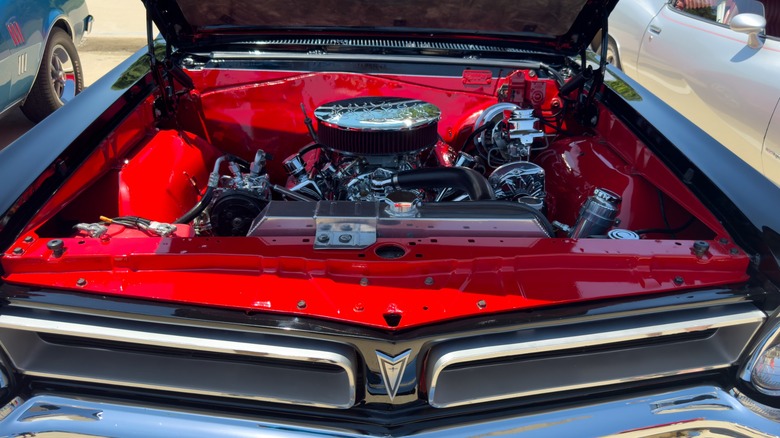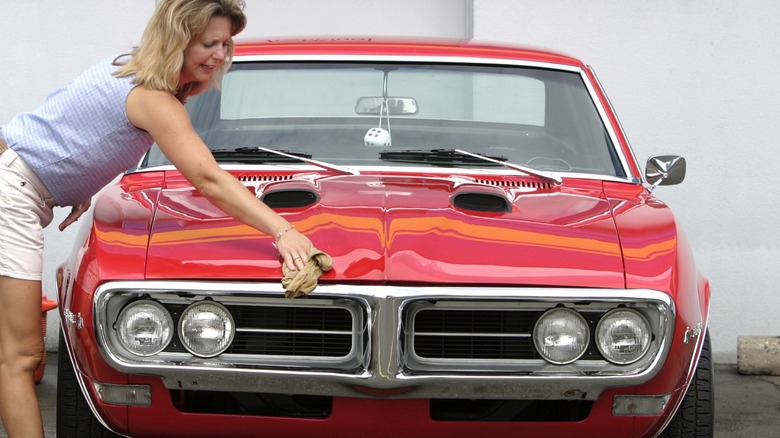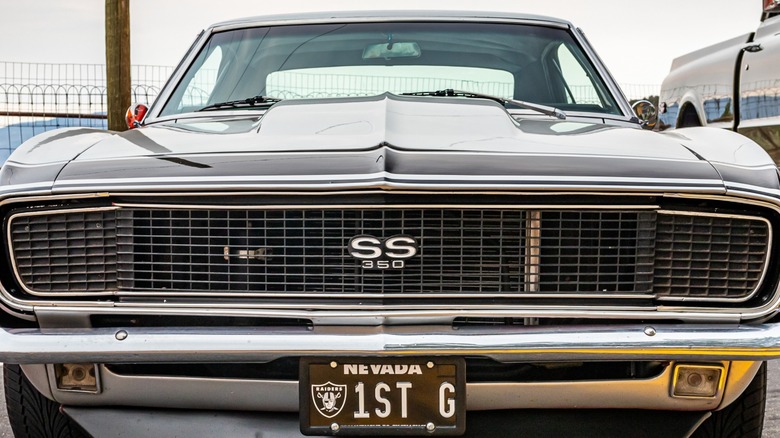Pontiac 350 Vs Chevy 350 Engines: What's The Difference?
The venerable 350 engine is based on a cast iron small block derived from previous small block engines of various displacements. While a General Motors 350 cubic inches small block sounds standard, each GM division produced engines with unique designs in the late 1960s.
Chevrolet didn't begin as a GM brand. GM founder William Durant and Swiss race car driver and engineer Louis Chevrolet incorporated the company in 1911. General Motors acquired Chevrolet in 1918, and it's one of GM's most popular brands today.
Pontiac's story is very different. General Motors developed the Pontiac brand, introducing it in 1926. Another difference is that, instead of continuing its popularity, GM discontinued the Pontiac brand in 2009.
Chevrolet, Pontiac, Buick, and Oldsmobile fell under the GM umbrella in the late 1960s. However, Chevrolet and Pontiac sat at the sportier end of the automaker's lineup with models like the Camaro and Firebird. That sports car spirit led each brand to develop unique, performance-oriented, 350-cubic-inch small block engines.
What makes the Pontiac 350 special?
Pontiac introduced its new 350-cubic-inch small block in 1968, placing the powerplant into its Firebird, Tempest, LeMans, and Parisienne models. The Pontiac 350 had a 4.62-inch bore spacing. While advertised as a 350, it displaced 353.8 cubic inches thanks to its 3.875-inch diameter bore and 3.75-inch stroke length. A High Output, or HO, Pontiac 350 variant, available for Firebird and Tempest models, produced 320 horsepower.
MotorTrend provides an excellent guide for visually distinguishing a Pontiac 350 from other GM examples. Pontiac 350 engines use a distributor at the rear of the engine block but off-center to the passenger side. The distributor shaft goes directly into the engine block, avoiding the intake manifold altogether, and there's a gap between the valley cover and the bottom of the intake. Cranking the engine with the distributor cap removed reveals the rotor spinning counterclockwise. Another significant visual clue is the driver's side mounting location for the starter and fuel pump.
What is different about the Chevy 350?
The 1967 Camaro was the first model to receive Chevrolet's new 295-horsepower 350-cubic-inch small-block powerplant, otherwise known as the 350 SBC. The 350 SBC uses a 4.00-inch bore and 3.48-inch stroke to achieve its 349.85 cubic-inch total displacement. In addition to those differences, the 350 SBC uses a shorter 4.4-inch bore spacing compared to the Pontiac 350.
While smaller displacement and lower horsepower are marked differences between the 350 SBC and the Pontiac 350, visual differences simplify the identification process. The 350 SBC uses the same rear-mounted distributor location. However, in this case, the distributor shaft goes into the block through a hole in the intake manifold. Also, there's no visible gap underneath the intake as its bottom is the valley cover. Cranking the engine with the distributor cap off reveals a clockwise distributor rotor rotation, opposite of the Pontiac 350. Finally, the fuel pump and starter mount to the passenger side of the 350 SBC, according to the MotorTrend guide.


